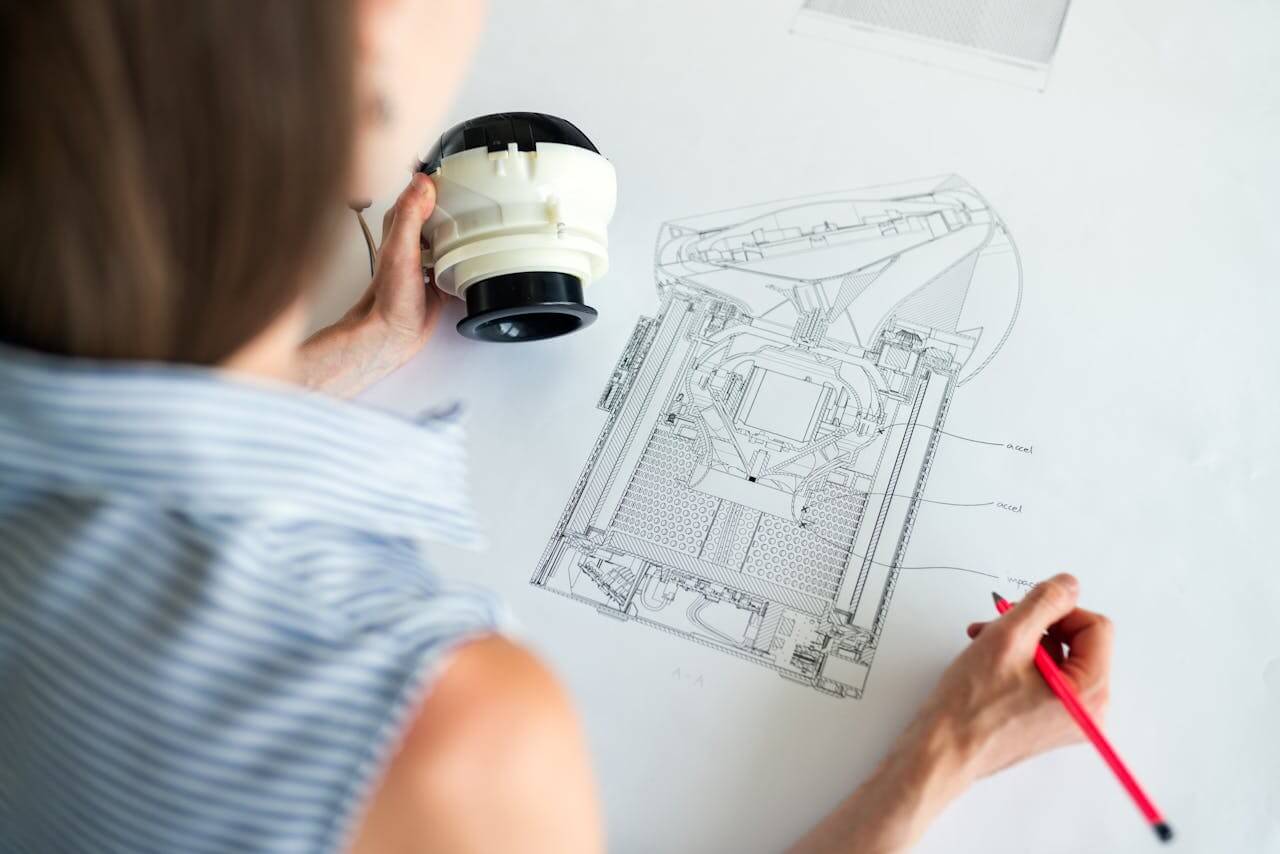
Prototyping is a critical phase in product development, allowing designers and engineers to test and refine their ideas before moving to mass production. In 2024, technological advancements have made prototyping more accessible, efficient, and versatile.
Whether you’re working on a new gadget, an innovative piece of furniture, or a groundbreaking medical device, the right prototyping method can significantly impact your project’s success. From digital modelling to hands-on fabrication techniques, there are numerous ways to bring your concepts to life.
This guide explores the most effective prototyping methods available today, providing insights and tips to help you choose the best approach for your needs.
1. 3D Printing
3D printing continues to revolutionize the prototyping process with its ability to quickly and accurately produce complex designs. This additive manufacturing technique builds objects layer by layer to create intricate geometries that would be difficult or impossible to achieve with traditional methods. 3D printing technology has advanced to offer faster print times, higher resolutions, and a wider range of materials, including metals, ceramics, and biocompatible substances. The versatility of 3D printing makes it ideal for producing detailed prototypes for various industries, from aerospace to healthcare.
Designers can easily iterate their designs, making modifications and reprinting as needed without incurring significant additional costs. This flexibility speeds up the development process and allows for thorough testing and refinement before final production. The ability to print using multiple materials in a single build enables the creation of functional prototypes that closely mimic the properties of the final product.
2. CNC Machining
CNC machining is a subtractive manufacturing process that uses computer-controlled tools to remove material from a solid block to create a part. This method can produce parts with tight tolerances and excellent surface finishes. CNC machining remains a popular choice for creating durable and high-quality prototypes, especially when working with metals and other tough materials.
One of the key advantages of CNC machining is its ability to work with a wide variety of materials, including metals, plastics, and composites. This makes it suitable for producing prototypes that withstand rigorous testing and evaluation. Advancements in CNC technology, such as multi-axis machining and improved software integration, have enhanced the efficiency and capability of this process. As a result, CNC machining can produce complex parts with greater accuracy and reduced lead times.
3. Metal Stamping
Metal stamping is a traditional manufacturing process that involves pressing a metal sheet into a desired shape using a die. This method is highly effective for producing large quantities of parts quickly and is particularly useful for creating prototypes of components that will eventually be mass-produced using the same technique. Metal stamping has benefited from technological advancements that improve precision, reduce waste, and enhance the overall quality of stamped parts.
The main advantage of a metal stamping service is its efficiency in producing consistent and repeatable parts. Modern stamping techniques can incorporate complex geometries and intricate details, expanding the range of possible applications. For prototypes that need to closely match the final product in terms of material properties and production methods, metal stamping offers a reliable and cost-effective solution.
4. Rapid Prototyping Services
Rapid prototyping services encompass a range of techniques to produce prototypes from digital designs. These services often combine various methods, such as 3D printing, CNC machining, and injection moulding, to deliver high-quality prototypes quickly. The availability and accessibility of rapid prototyping services have increased, making it easier for companies of all sizes to bring their ideas to life.
Rapid prototyping services allow designers to test their concepts in real-world conditions and make necessary adjustments before committing to full-scale production. These services often provide valuable insights into a design’s manufacturability and functionality, helping to identify potential issues early in the development process. The ability to produce multiple iterations quickly and affordably accelerates the development cycle, enabling faster time-to-market for new products.
5. Virtual Prototyping
Virtual prototyping involves creating and testing digital models of a product using computer-aided design (CAD) software. This approach allows designers to visualize and simulate their designs in a virtual environment, identifying potential problems and making adjustments before creating physical prototypes. Virtual prototyping tools have become more sophisticated, offering advanced simulation capabilities and integration with other digital manufacturing technologies.
The primary benefit of virtual prototyping is its ability to reduce the cost and time associated with physical prototyping. By testing and refining designs in a virtual space, companies can minimize the number of physical prototypes needed, saving resources and speeding up the development process. Virtual prototyping allows for comprehensive testing of various scenarios and conditions, providing a deeper understanding of a product’s performance and potential issues.
The Bottom Line
Prototyping in 2024 involves several methods and technologies, each with unique advantages. The precision of CNC machining, the versatility of 3D printing, and the efficiency of metal stamping offer solutions to meet the needs of any project.
Rapid prototyping services and virtual prototyping further enhance the ability to quickly and effectively develop and test new designs. By understanding and leveraging these advanced techniques, designers and engineers can streamline their development processes, reduce costs, and bring innovative products to market faster.
